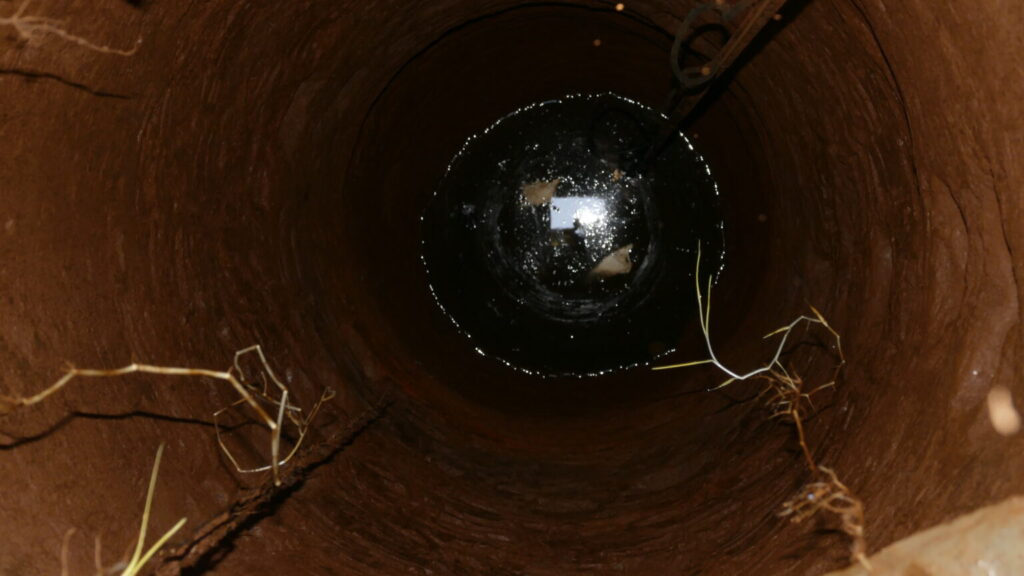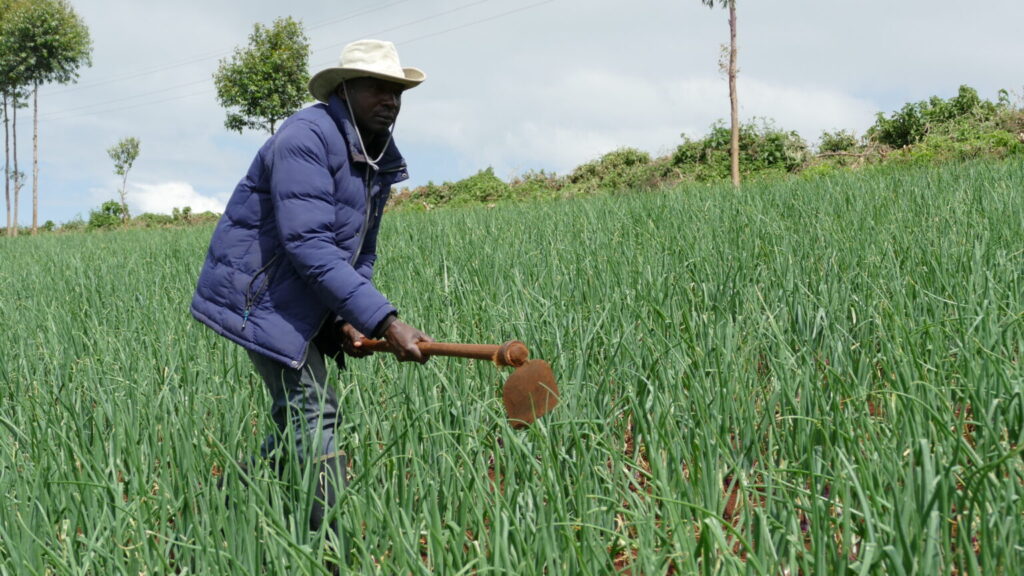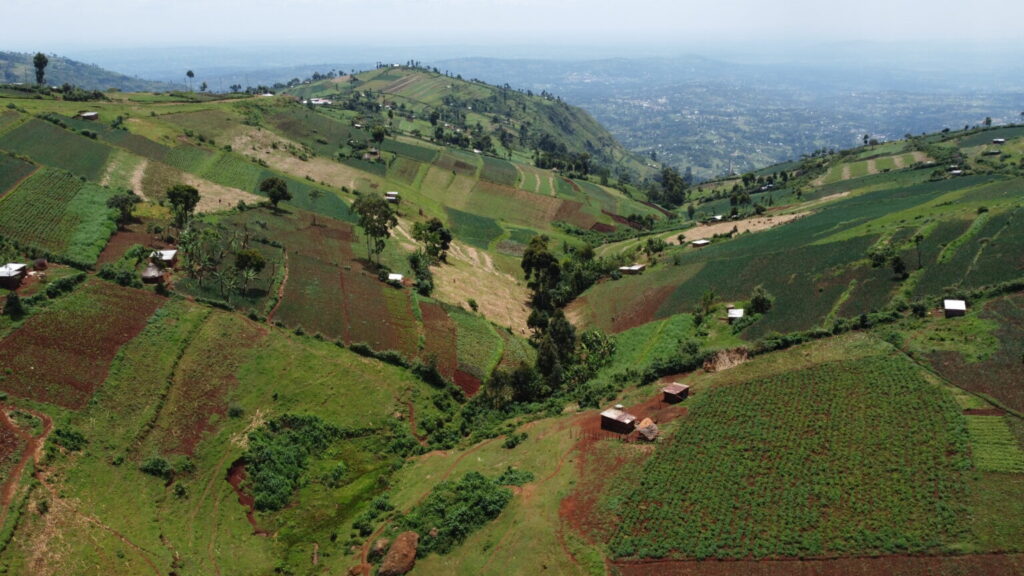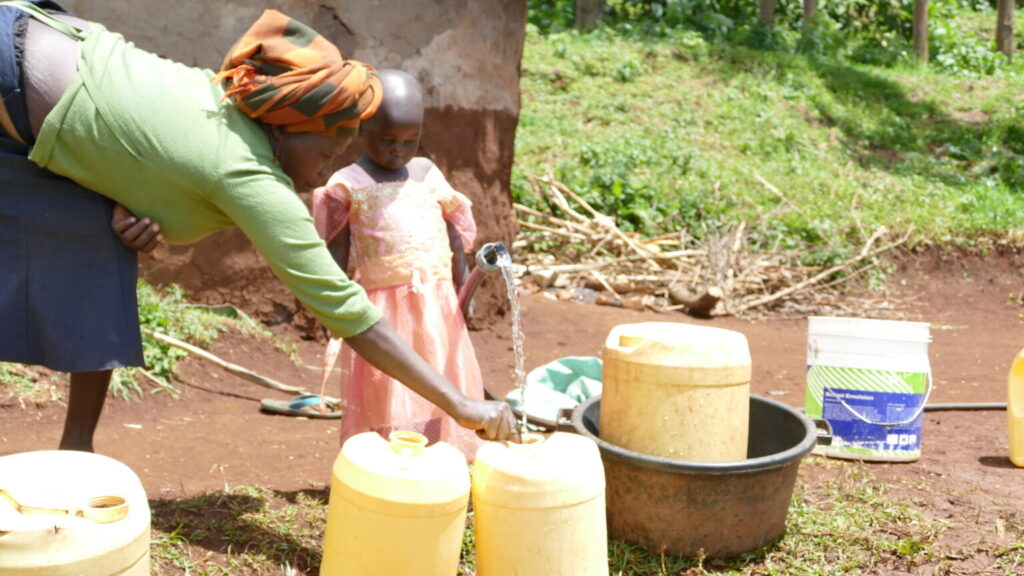By Jesse Chenge
Mt Elgon is one of Kenya’s main water towers. It is located north of Lake Victoria along the Nile Basin and reaches an altitude of 4,321 meters above sea level. The mountain forms the upper catchment area for two major rivers: Nzoia and Turkwel and provides water to the Malakisi River.
Unfortunately, with increased deforestation, areas surrounding Mount Elgon have been experiencing rising temperatures and decreased rainfall, posing a significant threat to groundwater availability and, in turn, to social-economic activities in the Western Kenya region.
Communities, primarily farmers who extract water from the ground to irrigate their crops, fear a severe blow to their livelihood as boreholes dry up.

Harrison Naibei is a farmer in Chemwenda village in Kopsiro, Mount Elgon. He says he incurred a great loss when his 2-acre onion project failed due to uncertain rainfall patterns, forcing him to invest in a borehole project that cost him about KSh 25,000 (204 USD). He uses a solar system to pump the water to the crops.
“After having a challenge with the dry spell last year, I decided to drill a borehole 32 feet deep,” said Naibei.
Naibei added that underground water is a good water source for irrigation and domestic use and insisted that the water table be maintained.

Richard Walukano, a water expert in the region, says the water towers in Kenya are drastically drying up. Walukano led the Kenya-Finland Corporation (KEFINCO), a project that drilled over 100 boreholes for residents to get clean, safe drinking water.
“Unfortunately, today, all the boreholes have dried up. He believes this is mainly due to the cutting down of trees, a vice he warned farming communities against. Walukano proposes afforestation be considered a national priority.”
Borehole Inventory of the Kenyan side of the Mt. Elgon aquifer region.
Walukano, who also doubles as the chairperson of the Bukusu Council of Elders, warns that the issue of water should not be taken lightly.
Jane Towett Naibei from Mount Elgon says their community has been utilising water from a natural spring over the years but the water level has dwindled by a considerable margin, especially during the dry period.
“I was born in this area; our grandfather fetched water from this natural spring that has been here for decades, but water is reducing every day.” said Naibei
Fred Ndiwa from Kamachei village in Kopsiro calls upon the government of Kenya to come up with a stimulus program to train and sensitize the communities living in Mt Elion region on the importance of planting trees and protecting rivers and natural springs to maintain water levels and therefore ensure availability of water for domestic use and other purposes.

He said some rivers are drying up, noting that the challenge dates back to 2016 when illegal tree cutting for charcoal and firewood became rampant in the Mount Elgon aquifer area. “We used to have enough water here, but because of cutting trees, water in our rivers has started reducing while the water streams have dried up,” says Ndiwa.
He expressed the risk of desertification in the Mount Elgon catchment area if the forest cover is not maintained.
Judith Chebet from Korong’otuny in Cheptais says her village depends on water from a borehole, and her family uses the water for irrigation and domestic use.
“These days, I wash my family’s clothes from home using water from my borehole, unlike before when I had to walk a long distance to fetch water from River Ndakuru reveals Chebet.

He says his department has recovered 7000 hectares of forest land, which had been encroached on.
George Wara the forest conservation officer for Bungoma County, acknowledges that Mount Elgon Forest is a critical water catchment area. He revealed that his department works with other stakeholders to settle the deforestation and encroachment problem.
Read Also; Local farmers in Kenya display the potential of groundwater use for irrigation
According to the Nile Basin Initiative (NBI), surface water systems, especially forests and wetlands, play an essential role in sustaining groundwater quality and quantity, providing a storage medium for water, and supporting complex ecosystem niches of economic and environmental importance.NBI is currently implementing a project aimed at strengthening the knowledge base, capacity, and cross-border institutional mechanisms of the Mt Elgon aquifer shared between Kenya and Uganda and two other aquifers of Gedaref-Adigrat aquifer between Ethiopia and Sudan and the Kagera aquifer shared by Burundi, Rwanda, Tanzania, and Uganda.The five-year (2020 – 2025) and USD 5.3 million project is funded by the Global Environment Facility (GEF) through the United Nations Development Programme (UNDP).
This article was supported by InfoNile with funding from Nile Basin Initiative.

